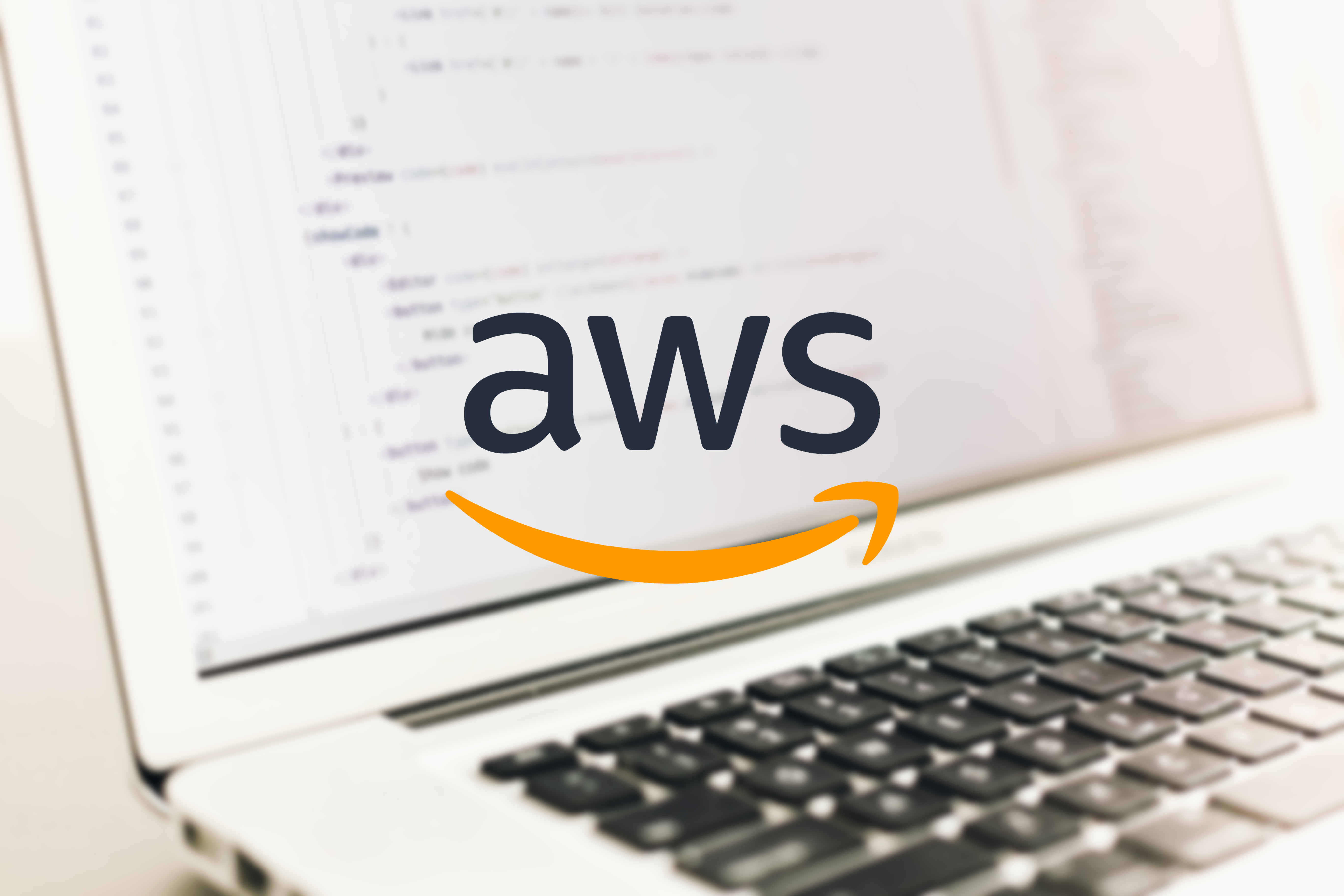
What Is AWS & How Has It Scaled So Quickly In DevOps?
Julian Wallis
15 min read

Are you curious about Amazon Web Services (AWS) and how they have managed to scale so quickly in the world of DevOps? AWS, or Amazon Web Services, is a cloud computing platform that has revolutionised how businesses manage and deploy their software applications.
With technology continuing to scale at unprecedented rates, businesses are looking for more ways than one to streamline their operations and make them more efficient. This is where AWS steps in – it provides a scalable, powerful, and secure cloud computing platform that enables businesses to run their applications and services in the cloud through enhanced automation and programming flexibility.
AWS has quickly become the go-to platform for businesses of all sizes, from small startups to large enterprises, due to its ease of use, flexibility, and cost-effectiveness. In this article, we dive into what AWS is and how it has become the industry leader in cloud computing and DevOps.
What Is AWS (Amazon Web Services)? 🌐

Amazon Web Services is the world’s most comprehensive and broadly adopted cloud platform. Millions of customers trust it to power their digital infrastructure and web applications. Organisations of all sizes and types are using the platform to lower costs, become more agile, efficient and innovate faster.
AWS provides on-demand delivery of technology services via the internet with the budget-friendly pay-as-you-go pricing model. This means you can use these services to build and run virtually any kind of application without incurring upfront costs or ongoing commitments.
The beauty is that the platform provides services and more features within those same services than any other cloud provider. This makes it faster, easier, and more cost-efficient to move your existing web applications to the cloud to build anything you can imagine. From infrastructure technologies, like compute storage and databases, to emerging technologies, such as machine learning and artificial intelligence, data lakes and analytics, and the Internet of Things – building on AWS means you can choose the right tool for the job specification.
For instance, AWS offers the widest variety of databases that are purpose-built for different types of applications. AWS lets you leverage the latest technologies to experiment and innovate more quickly!
⌛ The History of AWS
AWS was launched in 2006, and it was initially used as a platform to provide Amazon’s internal infrastructure to other businesses. Over time, it grew to become one of the most popular cloud computing platforms in the world, with over a million active customers. AWS has continuously innovated and expanded its services, offering businesses more and more features, services, and capabilities.
In the early years, the platform primarily provided basic infrastructure services, such as storage and computing capabilities. However, as it grew, Amazon added more services, such as databases, analytics, and machine learning, among others. Fast forward to today, AWS offers over 200 services to customers worldwide.
One of the key factors in the platform’s success has been its focus on innovation. Amazon is constantly adding new services and features to the platform, and it has a reputation for being one of the most innovative companies in the tech industry.
AWS has also been instrumental in driving the growth of the cloud computing industry as a whole. Its success has inspired other companies to enter the market, and today, there are several major cloud computing providers, including Microsoft Azure and Google Cloud Platform.
AWS has played a significant role in shaping the modern technology landscape, and it is more than likely to continue to be a major force in the industry for decades to come.
AWS & DevOps 👨💻

DevOps is a set of practices that combines software development (Dev) and IT operations (Ops) to enable businesses to deliver software applications and services more quickly and efficiently. In more ways than one, DevOps is a combination of cultural philosophies, practices, and tools that allows organisations to deliver applications and services at high velocity.
This means improving and evolving products faster than traditional software development and infrastructure management processes. By working at this speed, companies better serve their customers and remain competitive in the market.
Amazon Web Services has become the platform of choice for businesses that are adopting DevOps practices. It offers flexible services that allow companies to build and deliver products quickly. These services simplify tasks like managing infrastructure, deploying code, automating software releases, and monitoring performance.
The platform’s DevOps services are specifically designed to meet the needs of companies seeking to streamline their operations. Their intuitive tools automate manual tasks, facilitate team communication, and empower engineers to move quickly while maintaining control. With AWS, you can stay ahead of the curve and enjoy the benefits of high-speed DevOps.
AWS Services For DevOps 👨🔧
🔁 Continuous Integration & Delivery
Amazon offers a range of tools and services, including AWS CodePipeline and AWS CodeDeploy, which allow businesses to automate their software deployment processes and deliver software updates more quickly.
AWS CodePipeline is a continuous integration and delivery service that quickly and reliably updates your applications and infrastructure. This service builds, tests, and deploys your code every time there is a change based on the release process models you define, allowing for rapid and seamless feature and update delivery.
AWS CodeBuild is a fully managed build service that compiles source code, runs tests, and produces software packages that are ready for deployment. With CodeBuild, there’s no need for you to provision or manage your own build servers. Multiple builds are processed concurrently, so your builds are never left waiting in a queue.
AWS CodeDeploy automates code deployment to any instance, including Amazon EC2 instances and on-premises servers. As a result, CodeDeploy helps you avoid application deployment downtime and handles the complexity of updating your applications, making it easier for you to release new features quickly.
AWS CodeStar enables you to develop, build, and deploy applications on AWS more quickly. With its user-friendly and unified interface, you can easily manage your software development activities in one place. You can even set up your entire continuous delivery toolchain in minutes, allowing you to release code faster.
🏗️ Infrastructure As Code
The tools under this umbrella, including AWS CloudFormation and AWS OpsWorks, are meant to assist in provisioning, configuring, and managing AWS-built environments using code and provided templates.
AWS CloudFormation simplifies the creation and management of related AWS resources predictably. You can either choose from pre-made templates or create your own.
AWS OpsWorks uses Chef to automate server configurations and management across your Amazon EC2 instances or on-premises compute environments. Chef is an automation management tool that treats server configuration as code and simplifies the entire process. One of the best case studies of AWS OpsWorks is The Toronto Star, which reduced their overall deployment time for their content management system by over 900%, improving savings and streamlining productivity.

AWS Systems Manager automates software inventory, OS patches, system images, and Windows and Linux operating system configuration. This tool essentially helps you define and keep track of system configurations – preventing drift and maintaining the software compliance of your on-premises systems.
AWS Config provides a fully managed inventory of the platform’s resources, configuration history, and notifications for security and governance. You can also use AWS Config to create rules that automatically check resource configurations.
🕵️ Monitoring & Logging
Amazon offers different types of tools for monitoring and logging services, which allow businesses to track logs and monitor application performance in an almost real-time manner.
Amazon CloudWatch helps monitor cloud resources and the applications you operate on the platform. CloudWatch enables you to collect and track metrics, log records, set trigger alarms, and automate reactions to changes in your AWS cloud resources.
AWS X-Ray is a powerful tool for developers who build distributed applications like the ones implemented with the microservices framework. With X-Ray, you have instant insight into how your app and its services are performing, quickly identifying the root cause of errors and performance issues.
AWS CloudTrail captures and delivers a comprehensive log of AWS API calls related to your account. This easy-to-use web service delivers detailed information on the API caller, relevant timestamps, source IP address, request parameters, and response elements returned by the service.
Amazon DevOps Guru is one of the best options if you want to optimise your app’s performance and improve application availability. This cutting-edge service uses machine learning to detect anomalies and operational issues before they affect your customers. Say goodbye to downtime and hello to happy users! Essentially, DevOps Guru is specifically designed to help you improve your application’s overall performance and availability.
🔬 Microservices
Microservices architecture built using containers or serverless computing is one of the mainstays of incorporating Amazon Web Services in a DevOps environment. The platform provides two great microservices tools that make serverless computing as smooth as possible.
Amazon Elastic Container Service (ECS) is a container management service provided by Amazon that enables the deployment of Docker containers on a cluster of managed Amazon EC2 instances. The service is designed to be highly scalable and offers superior performance, providing users with the ability to run their applications with ease.
The popular online learning platform Coursera leveraged Amazon Elastic Container Service to manage its microservices-based architecture for its applications. This enabled Coursera to deploy software changes in a resource-isolated environment in just a matter of minutes, as opposed to hours. It’s possible because of the service’s ability to provide a highly scalable and efficient environment for managing containers.

AWS Lambda, on the other hand, is a serverless computing service that allows users to run their code without the need to provision or manage servers. This service supports a wide range of applications and backend services, providing users with the flexibility and ease of use they need. Users simply need to upload their code, and AWS Lambda takes care of everything else required to run and scale the code.
🖥️ Platform As A Service
This Amazon service is designed to make the deployment of web applications seamless without requiring any provision to manage the infrastructure and surrounding technology stack.
AWS Elastic Beanstalk is the AWS service that simplifies the process of deploying and scaling web applications and services. It supports a wide range of development languages, including Java, .NET, PHP, Node.js, Python, Ruby, Go, and Docker. Elastic Beanstalk allows users to deploy their web applications without the need to provision and manage infrastructure and application stack manually.
When you upload your code to Elastic Beanstalk, the service automatically takes care of the deployment process. It provisions the necessary capacity, performs load balancing, auto-scales the application, and monitors its health. Simultaneously, you maintain full control over the platform’s resources powering your application and can access them whenever necessary.
Zillow, a popular real estate company, faced performance issues and needed to scale its image-processing and delivery system. To solve these issues, Zillow migrated to AWS & used Elastic Beanstalk to run a custom-coded Python Imaging Library for its image processing work. This has helped them achieve better performance and scalability for their platform.
💿 Version Control
Amazon’s version control system enables private Git hosting in the cloud.
AWS CodeCommit is a reliable source control service that provides a fully-managed solution, simplifying the process of hosting private Git repositories for companies.
This platform enables secure and highly scalable storage of a wide range of files, including source code and binaries. Moreover, CodeCommit integrates seamlessly with your existing Git tools, allowing for a smooth transition to this new service without disrupting your team’s workflow.
How Has AWS Scaled So Quickly In DevOps? 🤷
The success of Amazon Web Services can be attributed to several factors, including its focus on innovation, its customer-centric approach, and its commitment to security and reliability. But that would be just scratching the surface!
More importantly, AWS has been able to scale quickly in DevOps due to its ability to provide businesses with the tools they need to build, deploy, and manage their applications in the cloud. Here’s why AWS makes perfect sense for DevOps.
🤸♂️ Flexibility
One of the main reasons businesses choose AWS is because of its flexibility. The platform offers a wide range of services, allowing businesses to choose the ones that best fit their needs. This flexibility is particularly important for businesses that are just starting out or have limited resources, as it allows them to scale up or down quickly as their needs change.
🕔 Immediacy
If you have an AWS account, you can readily use any of the platform’s services without any need for installation or setup of the software.
💸 Cost-Effectiveness
Another reason why AWS has become so popular in DevOps is its cost-effectiveness. It offers a pay-as-you-go pricing model, which means businesses only pay for the services they use. This is particularly beneficial for small businesses or startups that may not have the resources to invest in expensive infrastructure.
Furthermore, the platform offers flexible pricing with no upfront fees, termination penalties, or long-term contracts. And the AWS Free Tier allows users to get started with it easily and at no cost. More on pricing later.
📈 Scalability
The platform’s ability to scale quickly and easily is another factor that has contributed to its success in DevOps. AWS offers a range of services that can scale up or down based on demand, allowing businesses to easily manage their resources and ensure that they have the capacity they need to meet their customers’ needs.
It allows you to manage a single instance or scale to thousands, providing flexible compute resources that simplify provisioning, configuration, and scaling. This helps you make the most of the platform’s resources and focus on your core product instead of setting up and operating infrastructure on your own – perfect for a WebOps environment.
🛡️ Security
Security is a top priority for businesses in cloud computing, and AWS has made security a core part of its platform. It offers a range of security features, including encryption, identity and access management, and compliance certifications, to help businesses keep data and applications secure.

With AWS Identity and Access Management (IAM), you can efficiently set user permissions and policies, which gives you precise control over who can access your resources and how they can access them.
🤖 Automation Friendly
The platform enables you to build faster and more efficiently by automating manual tasks and processes such as deployments, development & test workflows, container management, and configuration management. This helps you save time and resources while achieving your goals.
🔗 Programmability
Amazon Web Services has an extensive network of partners, which allows it to offer support for a diverse array of third-party and open-source tools. This means you have the flexibility to create a complete solution using the tools you prefer. You can access each service through AWS Command Line Interface, APIs, and SDKs. Alternatively, you can model and set up your platform resources and entire infrastructure using declarative AWS CloudFormation templates.
What Makes AWS Stand Out From The Competition? 🦄
Amazon’s success isn’t only due to its scalability and innovation but also the company’s focus on security and compliance. They provide a highly secure environment that meets the most stringent security requirements, including compliance with HIPAA, PCI DSS, and SOC 2 standards.
Moreover, Amazon Web Services provides a comprehensive range of tools and services to help companies manage their security and compliance requirements. This includes the services we discussed earlier, such as AWS Identity and Access Management (IAM), AWS Key Management Service (KMS), AWS CloudTrail, and AWS Config, among others.
Another factor that makes the platform stand out from the competition is its ecosystem of partners and third-party integrations. AWS has a vast network of partners that provide complementary services and technologies, making it easy for companies to integrate it into their existing IT infrastructure.
How Much Does AWS Cost? 💰
Amazon Web Services provides a payment system based on pay-as-you-go pricing for most of its cloud services. With AWS, you only pay for the specific services that you require, for the duration that you use them, and without any complicated licensing or long-term contracts. This model is akin to how you pay for utilities such as water and electricity – you only pay for what you use, and when you stop using it, there are no extra charges or fees for terminating the service. How neat is that?
Essentially, the costs of using the platform are subject to several factors, including the type of services selected, the amount of data stored, and the level of usage. As a result, it’s challenging to determine an exact monthly cost. Nevertheless, it offers a cost calculator that can help estimate monthly expenses. Go ahead, try it out!
Conclusion: How Can AWS & DevOps Help Your Business? 🗳️
If you’re considering using AWS for your business IT needs, you must evaluate your requirements carefully and understand the various services and pricing models on offer. With proper planning and implementation, the platform can help your organisation achieve significant cost savings and improve overall IT infrastructure performance.
By leveraging the combination of DevOps and AWS services, you’re able to efficiently build, test, and deliver applications in a secure and highly-available environment. The DevOps toolset enables you to quickly respond to customer needs, experiment efficiently with new services, update existing applications with new features, and easily scale up for sudden spikes in demand.
With the platform’s top-tier support services and expertise to build secure environments, companies are more equipped than ever to succeed in today’s rapidly changing market.
If you’re ready to take advantage of the benefits offered by DevOps and AWS Services, don’t wait any longer! Book a discovery call today to discuss how you can implement effective cloud solutions and improve your digital customer experiences.
Topics
Published On
May 05, 2023

